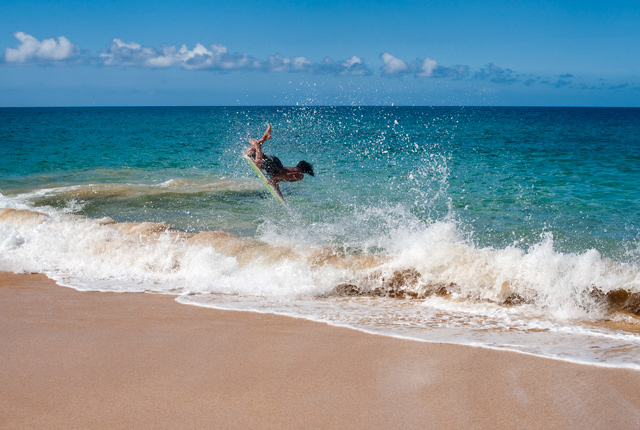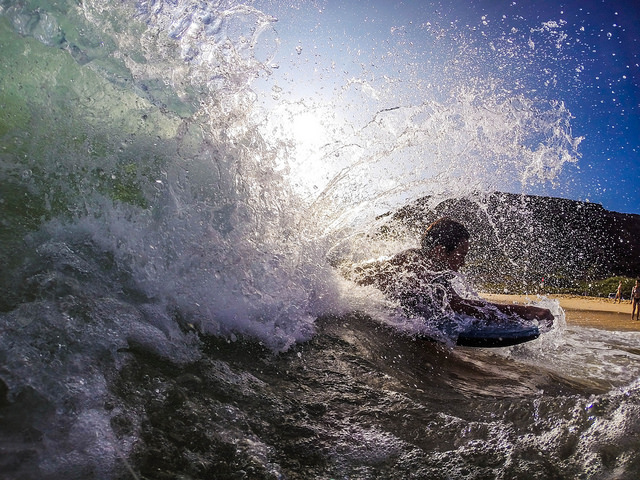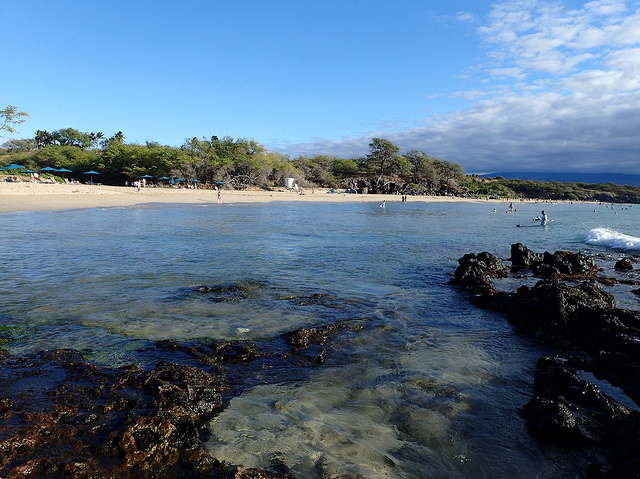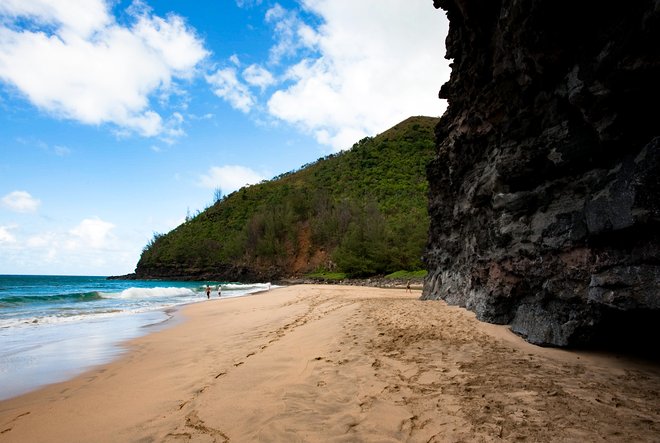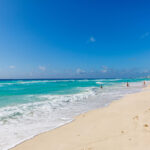From rocky coves with a tiny patch of sand to wide shorelines with big surf rolling in, Hawaii has some of the world's most beautiful beaches -- and some of the most dangerous. Conditions often change without warning, rip currents and undertow here are no joke, and many of the idyllic swimming spots aren't lifeguarded. However, most of the dangerous beaches in our roundup can be enjoyed using caution and common sense. Follow warnings and closures, learn how to spot unsafe waters, and when in doubt, don't go out. Also, be sure to check the Hawaiian Lifeguard Association's ocean safety website in advance.
Maui
This photo might appear harmless, but you’re looking at Makena Beach (a.k.a Breakneck Beach). With a moniker like that, it should come as no surprise that swimming here is extremely dangerous. A nasty shore break is what makes conditions perilous. Even worse, the beach has experienced a string of shark attacks during the last several years. The coolest beach on Maui — also somewhat uncommon — is Red Sand Beach (Kaihalulu Beach), located along a remote stretch of the Hana coast. The cove is partially protected by an offshore lava barrier, but it’s rocky, and there’s strong surf at the north end.
Oahu
It’s common to see 20-foot waves crest off Oahu’s North Shore in the winter, when pro surfers from around the globe flock here to compete in the yearly Vans Triple Crown. One of the event’s venues is Ehukai Beach, where the famous Banzai Pipeline barrels offshore. Another is Sunset Beach, a two-mile stretch of sand that extends from Ehukai up to Sunset Point and features a dozen reef breaks. During colder months, conditions are hazardous for swimming, but in the summer the waves are calm enough for taking a dip and snorkeling. Makapuu Beach in southeast Oahu has a strong shore break with a steep drop-off in the seafloor, combined with swirling offshore currents that only experienced swimmers should dive in. There’s a similar break at Sandy Beach, which is a popular spot for teenagers to bodysurf and boogie board. Conditions at this beach can become hazardous because it faces Molokai’s powerful channel.
Big Island
The youngest of the Hawaiian islands, Big Island (officially Island of Hawaii) has fewer beaches, as much of its shoreline is black volcanic rock. The longest stretch, at roughly 200 feet wide and a half-mile long, is Hapuna Beach, which also takes first place for being the most dangerous, particularly in the winter. High, powerful surf crashes down on the beach and kicks off strong rip currents. Along the Kona coast, Magic Sands Beach often completely disappears in the winter and reforms in the spring (hence, the “magic”). But the sand is hard-packed when it forms and waves can be sizable, making conditions unsafe.
Kauai
Considering Kauai’s Lumahai Beach was chosen as the filming location for “South Pacific,” it certainly has a stamp of approval for beauty. But this beach has another rep, for which it’s nicknamed “Luma-die.” A rocky barrier protects the eastern end from the open ocean, but it’s otherwise fully exposed to slamming surf along the steep drop-off onshore. Two of Kauai‘s most dangerous beaches can be found along the Kalalau Trail, which hugs the stunning Na Pali Coast. Hanakapiai Beach is about two miles in, and is particularly dangerous in the winter, when high waves and tides wipe away the sandy shoreline. At the end of the 11-mile trail is Kalalau Beach, where no shore reefs and strong rip currents make swimming impossible year-round. Though not technically a beach, the popular Queen’s Bath, a tide pool located in Princeville, is also extremely dangerous throughout the year. Drownings occur all too often as high waves can pound the rocky ledge where people sit, sweeping them over the edge and into the open ocean.
You’ll Also Like:
- 7 Gorgeous Beaches Where You Shouldn’t Swim
- 8 Places Around the World That Are Beautiful But Surprisingly Dangerous
- 7 Ways the Beach Can Be Dangerous for Kids
All products are independently selected by our writers and editors. If you buy something through our links, Oyster may earn an affiliate commission.
